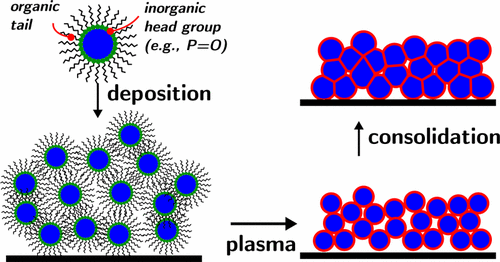当前位置:
X-MOL 学术
›
Chem. Mater.
›
论文详情
Our official English website, www.x-mol.net, welcomes your
feedback! (Note: you will need to create a separate account there.)
Building Materials from Colloidal Nanocrystal Assemblies: Molecular Control of Solid/Solid Interfaces in Nanostructured Tetragonal ZrO2
Chemistry of Materials ( IF 7.2 ) Pub Date : 2017-09-12 00:00:00 , DOI: 10.1021/acs.chemmater.7b02769 Santosh Shaw 1 , Tiago F. Silva 2 , Jonathan M. Bobbitt 3, 4 , Fabian Naab 5 , Cleber L. Rodrigues 2 , Bin Yuan 6 , Julia J. Chang 1 , Xinchun Tian 1 , Emily A. Smith 3, 4 , Ludovico Cademartiri 1, 4, 6
Chemistry of Materials ( IF 7.2 ) Pub Date : 2017-09-12 00:00:00 , DOI: 10.1021/acs.chemmater.7b02769 Santosh Shaw 1 , Tiago F. Silva 2 , Jonathan M. Bobbitt 3, 4 , Fabian Naab 5 , Cleber L. Rodrigues 2 , Bin Yuan 6 , Julia J. Chang 1 , Xinchun Tian 1 , Emily A. Smith 3, 4 , Ludovico Cademartiri 1, 4, 6
Affiliation

|
We here describe a bottom-up approach to control the composition of solid/solid interfaces in nanostructured materials, and we test its effectiveness on tetragonal ZrO2, an inorganic phase of great technological significance. Colloidal nanocrystals capped with trioctylphosphine oxide (TOPO) or oleic acid (OA) are deposited, and the organic fraction of the ligands is selectively etched with O2 plasma. The interfaces in the resulting all-inorganic colloidal nanocrystal assemblies are either nearly bare (for OA-capped nanocrystals) or terminated with phosphate groups (for TOPO-capped nanocrystals) resulting from the reaction of phosphine oxide groups with plasma species. The chemical modification of the interfaces has extensive effects on the thermodynamics and kinetics of the material. Different growth kinetics indicate different rate limiting processes of growth (surface diffusion for the phosphate-terminated surfaces and dissolution for the “bare” surfaces). Phosphate termination led to a higher activation energy of growth, and a 3-fold reduction in interfacial energy, and facilitated significantly the conversion of the tetragonal phase into the monoclinic phase. Films devoid of residual ligands persisted in the tetragonal phase at temperatures as high as 900 °C for 24 h.
中文翻译:

胶体纳米晶体装配体的建筑材料:纳米结构四方ZrO 2中的固体/固体界面的分子控制
我们在这里描述了一种自下而上的方法来控制纳米结构材料中固体/固体界面的组成,并测试了其对具有重要技术意义的无机相四方ZrO 2的有效性。沉积被三辛基氧化膦(TOPO)或油酸(OA)覆盖的胶体纳米晶体,并用O 2选择性蚀刻配体的有机部分等离子体。所得的全无机胶体纳米晶体组件中的界面几乎是裸露的(用于OA封端的纳米晶体),或被氧化膦基团与血浆物种反应而产生的磷酸基团封端(用于TOPO封端的纳米晶体)。界面的化学改性对材料的热力学和动力学具有广泛的影响。不同的生长动力学表明不同的速率限制过程(磷酸盐封端表面的表面扩散和“裸露”表面的溶解)。磷酸盐终止导致较高的生长活化能,并使界面能降低3倍,并显着促进了四方相向单斜相的转化。
更新日期:2017-09-12
中文翻译:

胶体纳米晶体装配体的建筑材料:纳米结构四方ZrO 2中的固体/固体界面的分子控制
我们在这里描述了一种自下而上的方法来控制纳米结构材料中固体/固体界面的组成,并测试了其对具有重要技术意义的无机相四方ZrO 2的有效性。沉积被三辛基氧化膦(TOPO)或油酸(OA)覆盖的胶体纳米晶体,并用O 2选择性蚀刻配体的有机部分等离子体。所得的全无机胶体纳米晶体组件中的界面几乎是裸露的(用于OA封端的纳米晶体),或被氧化膦基团与血浆物种反应而产生的磷酸基团封端(用于TOPO封端的纳米晶体)。界面的化学改性对材料的热力学和动力学具有广泛的影响。不同的生长动力学表明不同的速率限制过程(磷酸盐封端表面的表面扩散和“裸露”表面的溶解)。磷酸盐终止导致较高的生长活化能,并使界面能降低3倍,并显着促进了四方相向单斜相的转化。











































 京公网安备 11010802027423号
京公网安备 11010802027423号